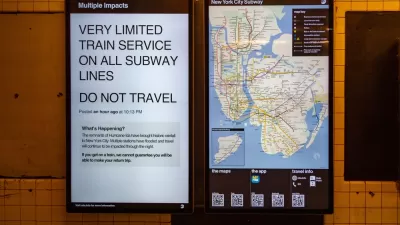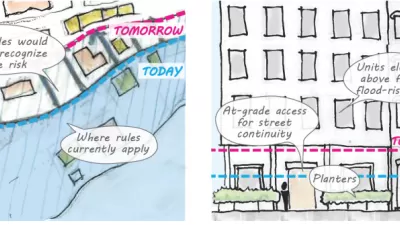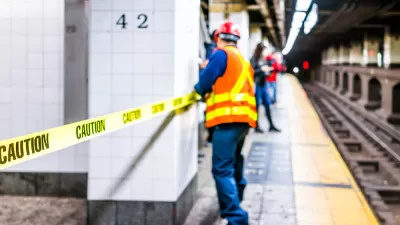Rebuilding and repairing New York City after Hurricane Sandy shows how climate change can exacerbate existing equity problems and that such disasters must spur efforts to rebuild fairly, not entrench existing problems.

Michelle Chen investigates the ongoing rebuilding process in New York City and the surrounding areas after Hurricane Sandy in a piece for The Nation. She talks about how efforts in the city are focused, not only on immediate repairs but also, "To safeguard cities from future disasters, cities need to improve infrastructural protection and promote ecologically conscious urban planning. Locally this means creating resilient local food, transit and energy systems that are responsive to global environmental pressures and accountable to local communities," Chen argues.
Strengthening the city is, however, only one piece of the work, another is ensuring that those most vulnerable to such disasters don't have their existing problems redoubled by the cities efforts. "New Orleans represents the nightmare scenario of a city that has struggled to implement economic- and environmental-justice measures after environmental disaster left poor communities of color displaced, exposed to economic exploitation, and politically marginalized in the rebuilding efforts," Chen writes.
These considerations will apply to issues all over the world. "On a global scale, both adaptation and mitigation are twin pillars of the Paris climate treaty, but the question of economic fairness looms large over both."
FULL STORY: There’s a Right Way—and a Wrong Way—for Cities to Mitigate Climate Change

Study: Maui’s Plan to Convert Vacation Rentals to Long-Term Housing Could Cause Nearly $1 Billion Economic Loss
The plan would reduce visitor accommodation by 25,% resulting in 1,900 jobs lost.

North Texas Transit Leaders Tout Benefits of TOD for Growing Region
At a summit focused on transit-oriented development, policymakers discussed how North Texas’ expanded light rail system can serve as a tool for economic growth.

Why Should We Subsidize Public Transportation?
Many public transit agencies face financial stress due to rising costs, declining fare revenue, and declining subsidies. Transit advocates must provide a strong business case for increasing public transit funding.

Dear Tesla Driver: “It’s not You, It’s Him.”
Amidst a booming bumper sticker industry, one writer offers solace to those asking, “Does this car make me look fascist?”

A Visual Celebration of Manhattan’s Chinatown Elder Community, Through Food
Lanterns, cafeteria trays, and community connection take center stage in this stunning photo essay.

How to Make US Trains Faster
Changes to boarding platforms and a switch to electric trains could improve U.S. passenger rail service without the added cost of high-speed rail.
Urban Design for Planners 1: Software Tools
This six-course series explores essential urban design concepts using open source software and equips planners with the tools they need to participate fully in the urban design process.
Planning for Universal Design
Learn the tools for implementing Universal Design in planning regulations.
City of Santa Clarita
Ascent Environmental
Institute for Housing and Urban Development Studies (IHS)
City of Grandview
Harvard GSD Executive Education
Toledo-Lucas County Plan Commissions
Salt Lake City
NYU Wagner Graduate School of Public Service





























